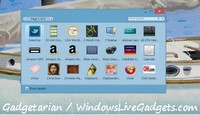It’s easy to save power and extend the battery life of your laptop and tablet
I have an ultra-portable Asus Vivobook that I enjoy so much, especially because it provides power autonomy for 10 hours or more! However, feeling confident that I have enough power I messed with its settings and I saw my battery being drained so fast that I felt dizzy! After that tremendous experience I followed the reverse course, I tried to save as much power as possible, and I’m sure this is going to help anyone with a laptop, especially if your laptop is not that efficient in power resources.
As you know, Windows 10 includes its own Battery Saver utility at Settings > Battery. Normally this utility is activated when your battery goes below 20%, but you can change this and let it perform its miracles even at 90%, provided of course you are willing to sacrifice some functions. Battery Saver poses some limits to background services and notifications. You can activate it as early as you want and decide if activity lost is important or not. If not, you will have gained battery power without losing anything! Configure Battery Saver at Settings > System > Battery. At the same “Battery” section of Windows Settings you can find out what apps consume most of your power. In any case, don’t forget to uninstall programs you don’t really need and use.
Next, at the Power & Sleep section of the Settings, avoid the temptation to leave your screen always on. “On battery power” have your screen turned off automatically after 5 minutes or so and the whole PC go to sleep after about 10 minutes. Of course you don’t need to wait even for those few minutes: when you don’t work you can immediately enter sleep mode by just closing the lid of your laptop or pressing the power button (you can configure these actions at the Sleep section of the advanced settings of your power plan), or by using a nice and light free utility called Sleeper. No need to say also that keeping the brightness of your monitor as low as possible is essential in saving power.
When you don’t need to use a wi-fi or bluetooth connection, activate airplane mode and save even more power. You can do this easily if you right click your Network icon at the system tray. Then at the Network & Internet section of the Windows Settings go to Airplane mode and activate it. Your system tray Network icon is now changed with an Airplane icon which you can right click to disable Airplane mode whenever you need to. Disconnect also peripherals you won’t need, from USB drives to printers, and it would be a good idea to update Windows whenever you charge your laptop.
Some of the best known freeware for battery management are Battery Care and Battery Optimizer; I’ve tried both and I didn’t find any reason to use them, since Microsoft’s built-in Battery Saver and Power Plan options exhaust the system’s abilities of saving power and extending your time between charges. Instead of them I use Power Plan Assistant, a free program that among other options it lets me change power plans on the fly and displays a little icon at the system tray showing the percentage of remaining battery life. You may also like to try this nice Battery Check Gadget and Battery Bar. Enjoy!
